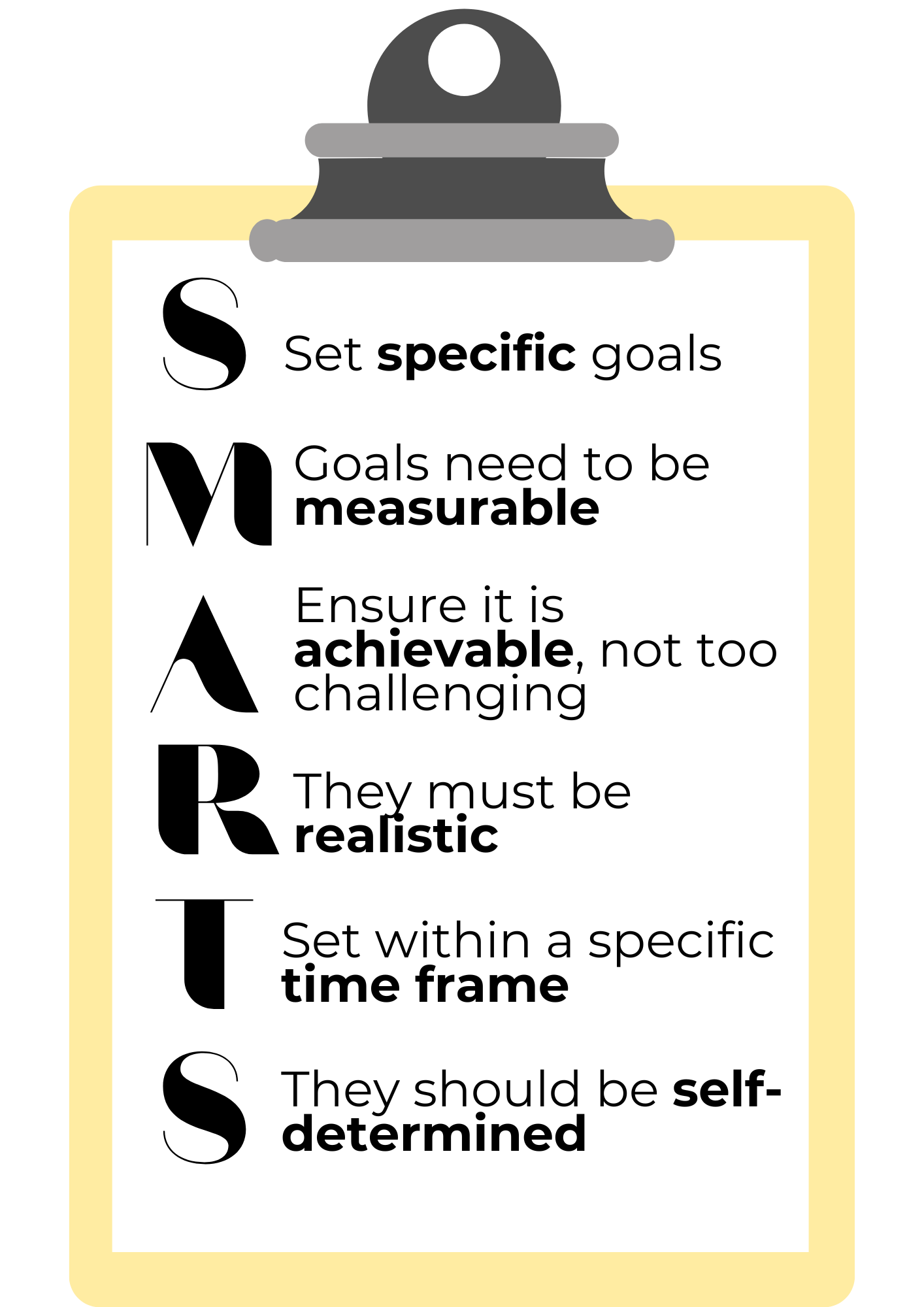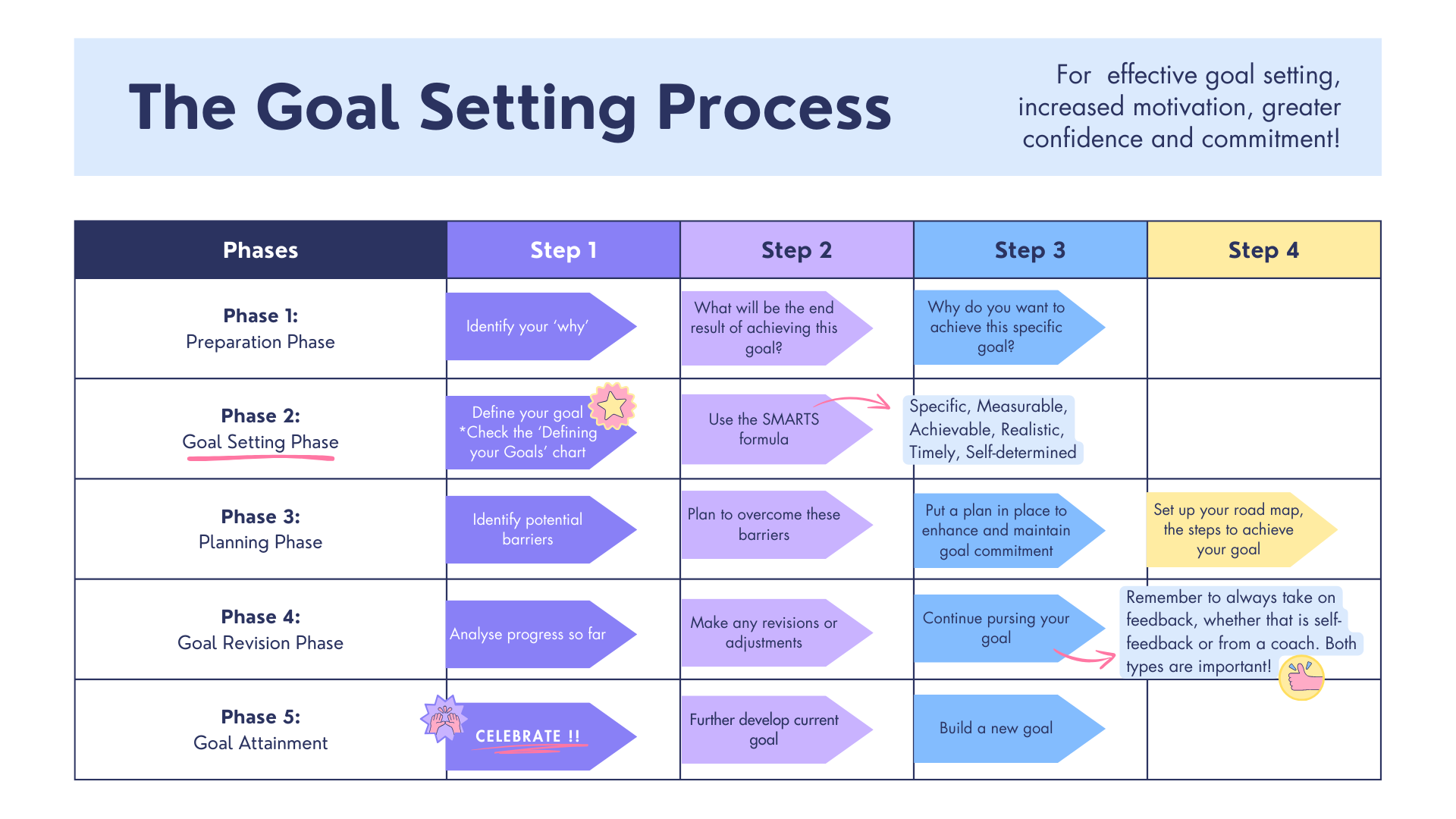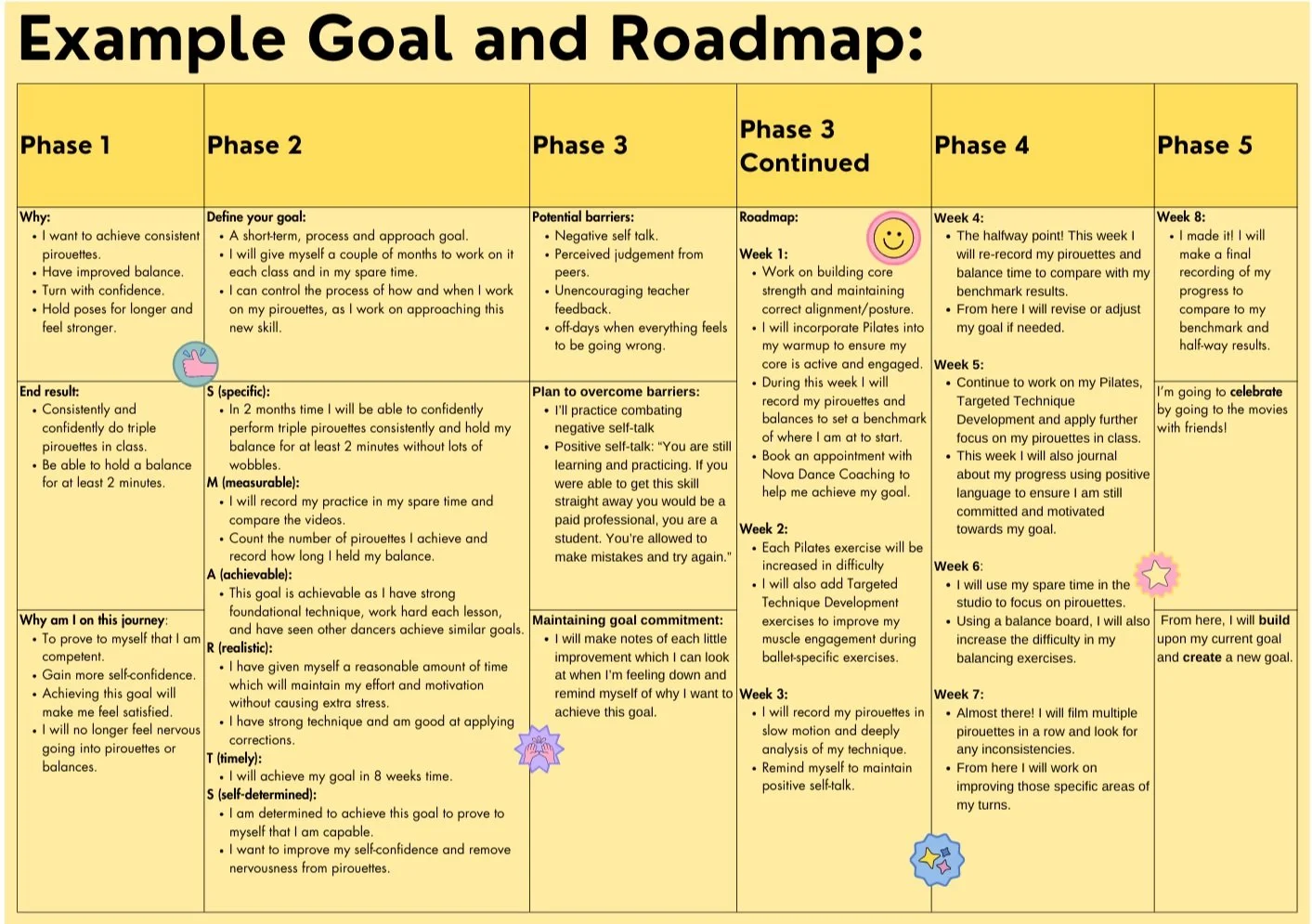SMARTS Goals: The Key to Unlocking your Potential in Dance and Life
Peyton Piper, NDC & CDS
“Dancers who wish to take their dancing to the next level should employ a vigorous goal-setting routine which uses short-term goals to lay out the stepping stones towards greater achievements.”
Do you remember that New Year's resolution you set back in December or January? Yeah, me neither! Over the past couple of years, I’ve learned there is a real art to setting effective goals and if you’re serious about achieving one, you need to master this art form.
Like anything in life including sports, your career, lifelong dreams, and DANCE, there are steps and processes to achieving our goals. For most people, simply stating a goal is ineffective and for others, they might struggle with putting their goals into action (Bailey, 2017). We can’t simply wish for a beautiful tutu and have it appear before us (although that would be fabulous!) we need to go through the correct steps to find or make the tutu, check it fits, and then pay for it.
Take the goal of getting pointe shoes for instance. If teachers just popped any dancer that walked in the door up on their toes we’d have new injuries every day! We train our cores, ankles, and leg muscles so we can be ready for pointe shoes. We need to learn how to sew and tie the ribbons (no, it’s not as simple as Angelina Ballerina makes it out to be), how to maintain our technique on flat first, engage our core and rotators, and it’s important to add, how to breathe and dance at the same time! There is plenty more we must learn before we put on the shoes, but we follow the steps and set little goals along the way so that one day we can achieve our goal of going up en pointe.
Dancers who wish to take their dancing to the next level should employ a vigorous goal-setting routine which uses short-term goals. These goals help us lay out the stepping stones towards our greater goals, they keep us focused and motivated, engaged with our training, and help to build our confidence.
Let’s go through some example goals, can you identify what’s missing from one and what makes the other better?
I will be in a ballet company by 2026!
This year I will audition for a full-time program to develop my technique further and audition for a company by 2027.
Number 2 is our better example, however, it’s far from perfect! So, let’s create your own goal using the formula Bird et al., (2024) discovered during their literature review. I've also added some tips I stumbled upon during my goal-setting journey. There are a few phases during the goal process and within each phase are suggested steps to strengthen your process of developing and attaining your goals.
We start in the preparation phase. Here you identify your ‘why’, determine the result of your goal, and clarify why you're on a journey towards this specific goal. If you’re a teacher or parent helping dancers set their own goals, make sure they understand why they are taking on the task of setting the goal in the first place, what are the benefits of goals and the principles or guidelines they should follow when creating them. Nova Dance Coaching personalised programs are built around effective goal-setting, we guide our students to creating well-established goals and roadmaps towards achieving them.
Next, we enter the goal-setting phase, this is a pretty jam-packed stage so it’s important to go through each step carefully so as not to miss any crucial details. Begin by defining your goal, is it a short-term or a long-term goal, an approach or avoidance goal, maybe a process or a performance goal, it could even be a mastery goal. By defining your goals, we can select more appropriate aims and be really particular with the steps to achieving them (Bailey, 2017).
It is recommended that athletes combine both short and long-term goals, with a focus on process goals for the shorter term and performance for long-term goals (Bird et al., 2024). This way, the short-term goals can enhance focus and motivation by providing smaller steps towards the larger, long-term goal. Another way of thinking about it is to set context-specific goals, such as goals for during practice, performance or competition.
At this stage we also want to focus on following the SMARTS goal formula. Developing goals with this formula is effective at increasing commitment, motivation and drive toward goal attainment (Johnson et al., 2011).
During the defining step of setting your goal, ensure it is specific. Avoid general or “do-your-best” kind of goals. Specific goals increase motivation and goal attainment (Bird et al., 2024).
Consider how you might measure progress toward this goal. Is it as simple as counting how many sit-ups you can do or measuring the angle of your extensions to second, maybe you can video your work or refer back to previous competition results. You might even journal and log any progress after each lesson.
Is your goal achievable? Bird et al. (2024) suggest goals should be challenging enough to require effort but not so difficult that they cause overwhelm, stress or fatigue, or leave dancers feeling incompetent and unmotivated. Goals should be realistic to enhance goal attainment and self-confidence. Setting unrealistic or weaker goals can leave dancers feeling hopeless or even bored.
Give yourself a realistic deadline which should motivate an increased effort and provide a time frame to achieve your goal, but not cause extra stress. Short-term goals can be as simple as achieving everyday tasks or extend to 6-10 weeks. Long-term goals usually extend for 1-4 years. Set yourself a reasonable deadline so that you can lay out a logical path towards achieving it.
Now the last step is quite important, and unfortunately, it is not always mentioned in the literature or models suggested, and often dance teachers forget this important aspect too. Humans need autonomy, dancers need autonomy! Goals must be self-determined. If you are a teacher, parent, or coach, assist your dancer to set their goal but allow them to take the lead. If a goal isn’t self-determined then they’ll lose motivation, feel extra external pressure, give up, and often develop negative self-talk, lowering their confidence and self-esteem.
From here we can enter the next phase, the planning phase. This phase isn’t about planning your goal, as we just did that, it's about planning how you will tackle your goal and overcome potential barriers.
Firstly, we need to identify any potential barriers, these can be internal and external. Once we know which barriers to keep an eye on we can create a plan on how to overcome them such as strengthening mental skills like imagery, positive self-talk, meditation, mindfulness, and reflective journaling to list a few.
As a teacher or parent, it is also crucial you continue to encourage dancers when they make mistakes, fall into a slump, or hit one of their barriers.
Secondly, we need to enhance goal commitment. Bird et al. (2024) suggested letting athletes choose their own goals and working with them to set and attain these goals encourages further goal commitment. It can also be helpful to journal about why you started on this journey towards this goal, what achieving it would mean to you, and what might be stopping you from improving. Reflecting on your answers can help to maintain motivation and commitment, not just to your goal but to yourself.
Thirdly, we need to set our roadmap. Knowing the steps to achieve your goal makes it easier to focus and make intentional decisions toward attaining your goal. Check out our example at the end of this blog to see how you might tackle your goal.
We begin putting our plan in place, taking action, and making our way towards goal attainment! Here is when we enter the goal revision phase. During this stage, we can turn to the measures we used to track progress and then revise or adjust our goals depending on how we have been progressing. Goals may need adjusting for several reasons, you might get injured, or your performance may plateau, either way, don’t be too hard on yourself if something does happen, simply adjust or create new goals depending on your circumstances.
During all phases, it's important to receive feedback. Self-feedback may include evaluating your progress based on your chosen measures and creating any adjustments you think might be required. Remember to celebrate the small wins too! Practice positive self-talk and combat negative thoughts, they aren’t productive and only hold you back. Self-feedback provides intrinsic motivation and can help build self-confidence (Bird et al., 2024).
Teachers could hold periodic meetings to discuss dancer’s progress and provide feedback, remembering to use positive and constructive language to maintain their confidence and motivation. Such feedback may include discussions regarding skill development, injury recovery or prevention, and safe practice (Johnson et al., 2011). As teachers and mentors, our words hold a lot of power, thus it is crucial we use positive and effective communication when speaking to our students and assist them with developing goals (Johnson et al., 2011).
Our final phase is goal attainment! Once you reach your goal, make sure you allow time to celebrate and don’t let your progress stop there, you always have the potential to go further. From here, you could develop your current goal further to reach the next challenge or start a new goal by following these steps.
Let me know what your SMARTS goal is in the comments! I can’t wait to hear all about your achievements!
-
Bailey, R. R. (2017). goal-setting and Action Planning for Behavior Change. American Journal of Lifestyle Medicine, 13(6), 615-618. Https://www.doi.org/10.1177/1559827617729634
Bird, M. D., Swann, C., & Jackman, P. C (2024). The What, Why, and How of goal-setting: A review of the Goal-Setting Process in Applied Sport Psychology Practice. Journal of Applied Sport Psychology, 36(1), 75-97. https://doi.org/10.1080/10413200.2023.2185699
Johnson, S. R., Wojnar, P. J, Price, W. J., Foley, T. J., Moon, J. R., Esposito, E. N., & Cromartie, F. J. (2011). A Coach's Responsibility: Learning How to Prepare Athletes for Peak Performance. The Sport Journal, 26(1),1-14.






